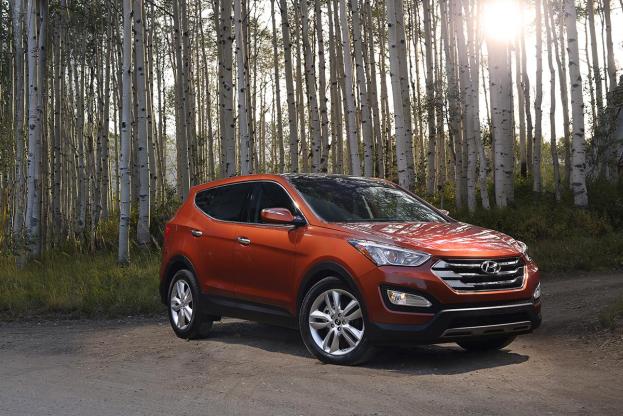 It looked like Hyundai was siding with Google in the in-car tech war when it announced a Google Maps-based navigation system last week. Now it seems the Korean carmaker is hedging its bets by incorporating some Apple tech as well. Siri integration is one of three new technologies Hyundai will unveil at CES this week.
It looked like Hyundai was siding with Google in the in-car tech war when it announced a Google Maps-based navigation system last week. Now it seems the Korean carmaker is hedging its bets by incorporating some Apple tech as well. Siri integration is one of three new technologies Hyundai will unveil at CES this week.
With Hyundai’s new Eyes Free mode, drivers with iOS 6-equipped devices can use Siri to operate a car’s infotainment system. That, in theory, means drivers could ditch confusing touch screen menus for simple voice commands. Eyes Free mode also keeps a device’s screen from lighting up to prevent distraction.
As Ford has learned with its less-than-perfect MyFord Touch system, voice commands can’t always solve the problem of infotainment complexity. We’ll have to see how Hyundai’s Siri-based system works in the real world.
Along with Siri Eyes Free mode, Hyundai will show two other new technologies at CES. Dragon Drive, developed by Nuance, is supposed to make in-car voice communications more natural. Hyundai says it will allow drivers to dictate commands, such as telling the car to play a certain song or find directions to a restaurant, without going through a rigid set of instructions.
Rounding out the roster is Mobile High-Definition Link (MHL). With 1080p uncompressed video capability and up to eight channels of digital audio, MHL allows users to display apps and other content on the car’s dashboard screen (hopefully not while driving). This is basically Hyundai’s way of integrating smartphones and other devices into car infotainment systems. MHL also charges devices while they’re plugged into the car.
To complement the new tech, future Hyundai’s hardware will also be upgraded. Hyundai promises high resolution, multi-touch displays with a “user-centric interface design.” Bluetooth 3.0 and Wi-Fi/3G round off the list of tech.
Hyundai didn’t say which models will get this smattering of tech, but don’t be surprised if, like the company’s BlueLink infotainment system, these features eventually find their way into volume models like the Sonata, Santa Fe, and Elantra.
Editors' Recommendations
- Hyundai bets big on hydrogen from sewage, plastic
- Watch Hyundai’s Ioniq 5 EV perform a crab walk
- Apple in talks with Hyundai over possible car, automaker confirms
- Hyundai S-A1 flying taxis could take flight by 2023 for Uber elevate
- Hyundai’s flying car program will take off at CES 2020 with concept vehicle


